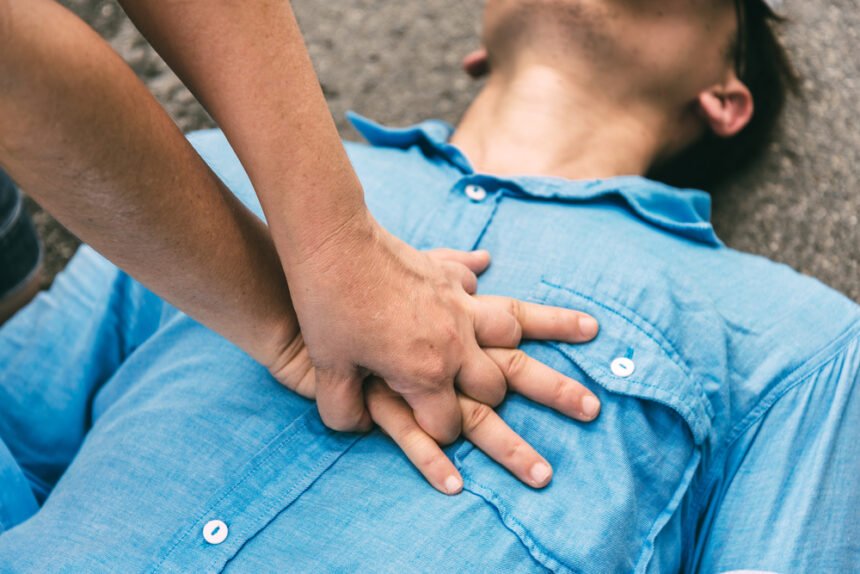Accidental rib fracture caused by cardiopulmonary resuscitation is a serious issue that might land a person in legal trouble. This article will examine the potential dangers of rib fractures and the legal problems of such an injury in the context of proper CPR training. Keep reading to understand why getting CPR certified is essential to avoid such issues.
What Happens to the Ribs During CPR and How do Fractures Occur?
CPR is applying pressure to the chest area to manually pump the heart and maintain blood circulation to the vital organs in a patient who has suffered from a heart attack. The heart and lungs are protected by the sternum and ribs. At some point during CPR, as medics administer external chest compressions, they may cause the following:
1. Chest compression: Deep chest compressions, generally at least 2 inches for adults, are required for effectiveness. This depth ensures that medics sufficiently compress the heart to boost blood circulation.
2. Rib Flexibility: Ribs protect essential organs while being incredibly flexible. Sometimes excessive exercises may cause wear and tear during workouts that may lead to the ribs being flexed or bent due to the strain caused further during CPR.
3. Fractures: In certain situations, the ribs may fracture or break, mainly while medics perform forceful or incorrect chest compressions. Rib fractures are a possible side effect of CPR.
Rib fractures are a significant cause for concern during CPR; however, it is critical to remember that the first goal is always to save the patient. Broken ribs are insignificant compared to the threat of death from a heart attack.
Highlighting the Vital Role of CPR Despite the Risk of Rib Fracture
Patients suffering from heart attack need CPR immediately as it increases their chances of survival, and despite the risk of rib fracture, CPR remains a critical treatment.
- CPR helps maintain blood circulation to essential organs, including the brain, which can prevent brain damage while increasing the chances of a full recovery.
- CPR provides the body with the oxygen necessary for survival through chest compressions and rescue breaths.
- CPR is a gateway to skilled medical assistance. It keeps the blood flowing until more medical aid arrives.
- According to research, immediate bystander CPR can increase or even triple a patient’s chances of surviving a heart attack.
In summary, the benefits of CPR surpass the risks of rib fractures. When CPR is required, medics shouldn’t hesitate since immediate action could mean the difference between life and death.
How to Identify Signs of Rib Fractures During and After CPR?
Recognizing rib fractures during and after CPR is crucial for the patient’s safety and any legal issues that may emerge. Here’s how to detect rib fractures:
1. Audible Sounds: when performing CPR, you may hear cracking or popping sounds. These sounds, while traumatic, may signal rib fractures.
2. Evident proof: Following CPR, search for physical evidence of rib fractures, such as swelling, bruising, or chest abnormalities.
3. Pain: Discomfort in the chest may occur if the patient regains consciousness. Please take note of their concerns and respond appropriately.
4. Difficulty breathing: Rib fractures can make breathing difficult. Consider rib fractures if the person is having difficulty breathing or experiencing chest pain.
In case you suspect rib fractures, seek medical assistance right away. Professionals in the medical field can determine the degree of the injuries and give proper care.
Legal Implications and Documentation Related to Rib Fractures During CPR
From a legal standpoint, all cases involving rib fractures during CPR should be documented. This documentation supports a variety of operations:
1. Medical Records: Proper medical records should be maintained, including all facts about CPR, such as chest compressions and any complications during CPR.
2. Liability Consideration: Awareness of their legal obligation should be in the minds of CPR professionals.
3. Good Samaritan laws: Several states protect CPR specialists who provide emergency aid, including CPR. Knowing these laws may offer one legal protection.
4. Training Records: Keeping records of CPR training and certification is essential. It shows adequate training and understanding of CPR’s dangers and benefits.
Conclusion
CPR training prepares people to save lives in an emergency. Furthermore, proper paperwork and legal awareness are essential for healthcare workers. Ultimately, the risks shouldn’t discourage trained professionals from conducting life-saving treatments when necessary. You must stay prepared for whenever an emergency occurs, this is why you should enroll for life-saving CPR classes from a reputed organization and make a difference in saving lives.

